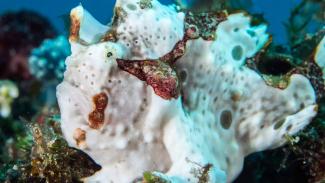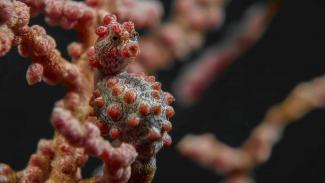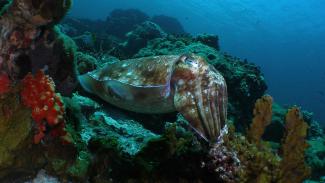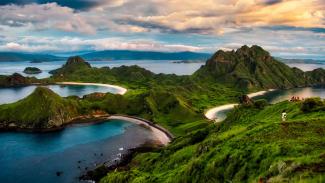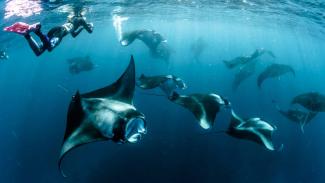Remote and spectacular scuba diving in Sulawesi
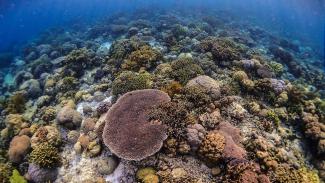
Benjamin Jones
The islands that make up the Wakatobi chain have some of the world’s best diving with atolls, walls, fringing reefs, sea mounts & a barrier reef contributing to the almost limitless diving opportunities.
The national park comprises of four main islands, Wangi Wangi, Kaledupa, Tomea & Binongki (thus the name WaKaToBi) the reach out from the south-eastern tip of Sulawesi.
Wakatobi's diving can be enjoyed all year round, with a small number of resorts and liveaboard options available.
Highlights
Best diving spots
The atolls of Koromaha & Koka have stunning reefs teeming with life. Schools of Trevally & Fusliers flit around in the blue while you admire the pristine coral-covered walls and overhangs of the atoll. Turtles, Sharks & Eagles Rays are also sometimes seen. West of Tomia, there are a wealth of fantastic & colourful dive sites.
The sumptous Wakatobi Dive Resort's house reef will take your breath away - no less than four different species of Pygmy Seahorse have been identified on the beautiful reef. Nearby, Roma & Cornucopia are also stunning sites with incredible corals and a huge diversity of life.
Looking for the latest liveaboard deals in Indonesia? Find your deal
Around Hoga Island to the north are sea-mounts, ridges & coral gardens offering more great diving, including the chance to see Mobulas - the smaller cousin of the Manta Ray. Wangi Wangi is the northern-most island in the chain. It has excellent, but often challenging diving with numerous pelagic species, including Sharks & Rays. Anano Island, in the north-west also has excellent diving.
When to dive
These islands have been created from uplifted limestone. This, along with the dry climate means mimimal run-off & great visibility for most of the year, with the exception of July & August when plankton blooms lower the visibility but dramatically increase the chance to see larger pelagics.
Getting there
If you plan to stay at the Wakatobi Dive Resort, you should travel via Bali, which has an international airport in Denpasar. From there the resort offers charter planes which take you as far as Kendari, before taking you by boat to the resort.
For more independent minded souls or those staying at other resorts in the area, it is possible to fly to Makassar in Sulawesi, then take either a plane or (lengthy) public ferry to Kendari, before arranging onward transport to your resort.
Activities
Aside from diving - relaxing in the remote, tropical island setting and enjoying the scenery is the main activity. It is possible to walk around the island and there is a house reef, so you can dive or snorkel until your heart’s content.
Resort and liveaboard options
There are both resort and liveaboard options available to dive the region. The most famous is the luxurious Wakatobi Dive Resort, which also operate the Pelagian liveaboard from the resort.
Other resort options are available, while some of Indonesia's liveaboards occasionally offer itineraries which take in these islands. Only those staying at Wakatobi Dive Resort, or joining the Pelagian liveaboard may join the resort's charter flight from Bali.
A number of other liveaboards frequent this region seasonally. We recommend the team at Liveaboard.com to find your perfect Wakatobi liveaboard adventure.
Did you know?
Wakatobi National Park is Indonesia's third largest national park. It is exceptionally diverse, with sea grass meadows, mangroves, fringing reefs, atolls and a barrier reef providing habitats for a large range of marine species. According to Wikipedia Wakatobi National Park is home to over 940 fish species and 750 of the world's 850 coral reef species.
In 2012, Wakatobi was included on UNESCO's list of World Biosphere Reserves, and is tentatively listed as a UNESCO World Heritage Site.
You might also enjoy...
Maumere
Maumere is a beautiful bay on the north coast of Flores. It is an area that is famous for its diversity.
Sperm Whales, Pilot Whales, Dolphins & Whalesharks cruise the bay, good encounters with Sharks & large Rays are possible and there is a wealth of macro life to keep any diver fascinated for hours.
Lembeh Strait
Lembeh Strait separates little Lembeh island from the north-eastern shores of Sulawesi. It is famed for its exceptional muck diving.
The coastline either side of the Lembeh Strait has a rugged beauty, but it is the action below the waves that draws divers here.
Tunku Abdul Rahman
Just off the coast from Kota Kinabalu, Sabah's regional capital - the five islands that make up Tunku Abdul Rahman National Park are often overlooked by divers heading straight to Sipadan in the south.
The national park, which is named after a former Malaysian president, has some very good diving though, with pretty fringing reefs sloping gently down from white-sand beaches, plus some rare & unusual species.
Komodo National Park
Komodo National Park is the home of the Komodo Dragon - and also some of the best diving in Indonesia.
It is a popular liveaboard diving destination.
The national park comprises of two main islands, Komodo Island and Rinca Island, along with numerous smaller islets. These current swept islands of Komodo are home to a huge amount of diversity, wonderful coral reefs, a profusion of marine life and no shortage of pelagic action.
East Kalimantan
On the east coast of Kalimantan, a little south from the world famous Sipadan area, are more equally impressive, but less well-known islands & reefs.
These difficult to reach dive sites are now beginning to open up to divers - and the intrepid travelers who make it this far will not be disappointed.
Dummie's guide to camera kit
Jakob Owens


